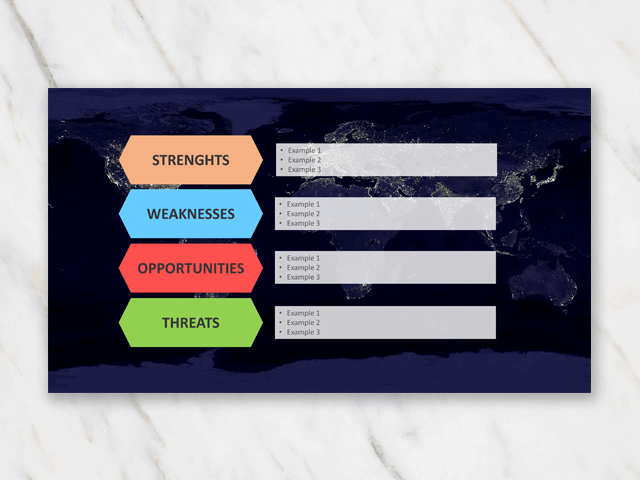
Free SWOT analysis template in PowerPoint
With one of these templates it will be easy for you to determine the SWOT for your company
Free download
Easy-to-edit PowerPoint file

You are trying to analyze your business
Definition of a SWOT Analysis
Strengths
Positive tangible and intangible attributes, internal to an organization, they are within the organization’s control.
Weaknesses
Factors that are within an organization’s control that detract from its ability to attain the desired goal. Which areas might the organization improve?
Opportunities
External attractive factors that represent the reason for an organization to exist and develop. What opportunities exist in the environment, which will propel the organization? Identify them by their “time frames”
Threats
External factors, beyond an organization’s control, which could place the organization mission or operation at risk. The organization may benefit by having contingency plans to address them if they should occur.
Find your SWOT Analyis template now.
Let's go!From SOFT to SWOT Analysis
The origins of the SWOT analysis technique is credited by Albert Humphrey, who led a research project at Stanford University in the 1960s and 1970s using data from many top companies. The goal was to identify why corporate planning failed. Humphrey and the original research team used the categories “What is good in the present is Satisfactory, good in the future is an Opportunity; bad in the present is a Fault and bad in the future is a Threat.” In 1964 Urick and Orr at a conference changed the F to a W, and it has stuck as that, soFt to sWot.





